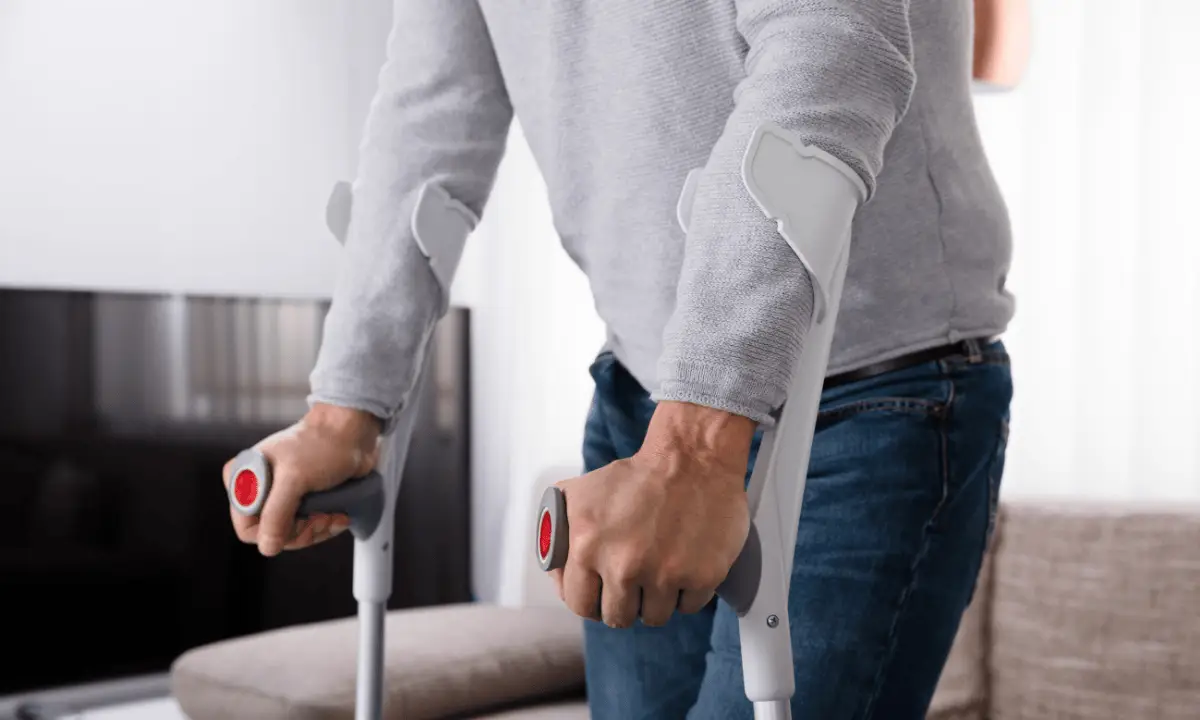Your Guide to AIA Insurance in Australia
Navigating an AIA TPD claim can feel overwhelming, especially when you’re already dealing with the physical, emotional, and financial toll of a serious injury or illness. Whether you’re struggling to return to work or facing a permanent disability, accessing your AIA superannuation or TPD insurance can be a critical lifeline.
AIA, part of the global AIA Group established in 1919, opened its first Australian office in Melbourne in 1972. Today, AIA Australia provides Total and Permanent Disablement (TPD) cover to thousands of Australians through their superannuation funds. In 2024 alone, AIA Australia paid over $800 million in TPD claims, proving how vital these insurance benefits can be.
If you’re looking for help to make an AIA insurance claim, or have previously tried and had a claim denied, we’re here to help you take the next step. Read on to see how our superannuation lawyers can help make a successful AIA insurance claim, all on a No Win No Fee basis.

What does AIA Australia provide?
AIA Australia supports over 3.8 million Australians with their life insurance, TPD insurance, income protection, and superannuation-linked insurance needs. Below are the key insurance services offered:
AIA TPD Insurance (Total and Permanent Disablement)
AIA Australia offers TPD insurance through superannuation and retail policies. Eligible members may receive a lump sum payment if they become:
Unable to work in their usual occupation, or any job they have training or experience in
Unable to perform essential domestic duties, or
Suffering from a total or partial disability that limits daily functioning.
In some cases, such as the permanent loss of one arm, leg, or the sight in one eye, members may be eligible for a partial benefit, capped at $750,000 or 25% of the insured sum (depending on the policy).
At Withstand Lawyers, our TPD claim lawyers offer a free claim check, including contacting your superannuation fund to identify your insurance cover and assess your eligibility. If you qualify, we’ll proceed under our No Win, No Fee policy, meaning you pay nothing unless your claim is successful.
Contact us today to start your AIA TPD claim.
AIA Income Protection Insurance
AIA Australia’s income protection insurance provides cover of up to 70% of your regular income for a period of time if you’re unable to work due to injury or illness. This benefit helps cover everyday expenses during your recovery and is separate from your TPD insurance.
Death/Terminal Illness Benefit
If the life-insured AIA Australia member dies before the expiry date of the benefit, their beneficiaries may receive a death benefit of up to 6 times the insured monthly amount, capped at $60,000. This ensures loved ones are financially supported during a difficult time.

AIA Australia TPD Eligibility
If you’re an AIA Australia insurance member and have become unable to work due to an injury, illness or condition, you may be eligible to make a Total and Permanent Disablement (TPD) claim. However, each claim is assessed based on your individual policy terms, definitions, and conditions.
General TPD Eligibility Criteria
To qualify for an AIA TPD claim, most policies require that you:
Have stopped working due to your injury, illness or condition
Are unable to work in any occupation that you are reasonably suited to based on your education, training, or experience.
This is known as the “Any Occupation” TPD definition, which is commonly used in AIA super TPD policies.
🔍Click here to read more about common TPD policy definitions.
TPD Claim Waiting Period
Generally, there is a waiting period of at least 3 months before you can lodge a TPD claim. However, if you suffer from a specified medical condition, such as cancer, stroke, or neurological disease, your claim may be processed sooner, provided it’s supported by a qualified medical assessment.
Unsure If You’re Eligible to Make an AIA TPD Claim?
TPD claims can be complex, and eligibility often depends on how your policy is worded and how your medical condition is assessed. At Withstand Lawyers, our experienced TPD lawyers offer a free claim check to:
Review your AIA superannuation or insurance policies,
Assess your eligibility under the relevant TPD definitions, and
Explain your options clearly—with no upfront cost.
If you’re eligible, we’ll handle your claim on a No Win, No Fee basis. Contact us today to get started.
According to AIA’s report in 2021, mental health, musculoskeletal, accidents, nervous system diseases and cancer are the 5 most common medical conditions that received TPD payout through AIA Australia Insurance.
How to Make a TPD Claim with AIA Australia
Depending on your medical condition and the terms of your AIA TPD insurance policy, you may be eligible to make a Total and Permanent Disablement (TPD) claim. While every policy and situation is different, the general TPD claims process typically involves:
1. Medical Evidence Collection
Gathering medical reports from your GP and, where required, undergoing assessments by independent medical examiners to confirm your condition and incapacity for work.
2. Identity & Background Documentation
Providing proof of identity along with records that demonstrate your education, training, and employment history—critical for meeting the TPD eligibility criteria under the “Any Occupation” or “Own Occupation” definitions.
3. Employment & Financial Evidence
Submitting documents that show your work history, details of when and why you stopped working, as well as financial records such as payslips, tax returns, and superannuation statements (if applicable).
At Withstand Lawyers, we’ve helped thousands of Australians successfully claim their TPD entitlements. If you’re unsure about your eligibility or need guidance through the process, our trusted TPD lawyers offer a free claim check and work on a No Win, No Fee basis, so you only pay if your claim succeeds. Contact us today to see what your claim could be worth.
What Happens After You Lodge an AIA TPD Claim?
Once you’ve submitted your TPD claim, the insurer, AIA Australia, will assess your application and issue one of three possible outcomes:
✅ Claim Accepted
If your TPD claim is approved, you’ll receive a lump sum payout, which you can use at your discretion, such as to cover medical expenses, pay off your mortgage, or support your family during recovery.
⏳ Claim Deferred
A deferred claim usually means the insurer is waiting for your medical condition to stabilise before making a final decision. This often occurs in cases where the long-term impact of your condition is not yet clear.
❌ Claim Declined
If your claim is declined, the insurer must provide you with a written explanation outlining the specific reasons for the decision. This may include issues related to eligibility, lack of medical evidence, or policy exclusions.
If this happens, don’t give up. Our experienced TPD lawyers can review your case and help you lodge a formal complaint and appeal the decision. We offer a free case review and work on a No Win, No Fee basis. Contact us today for a free claim assessment and personalised advice about your denied TPD claim.

AIA TPD claim processing time
There is no fixed time frame for finalising a Total and Permanent Disablement (TPD) claim through your superannuation fund. However, most successful superannuation TPD claims are finalised within 12 months.
Factors That Influence TPD Claim Processing Time
Quality of Medical Evidence: The stronger and clearer your medical documentation, the faster your claim may be processed.
Eligibility Criteria: Claims that clearly meet the policy’s TPD definitions (such as “Any Occupation” or “Own Occupation”) are more likely to be processed efficiently.
Proper Claim Preparation: Submitting a complete and well-organised claim that includes all required documents significantly reduces delays.
Regular Updates from Super Funds
Superannuation funds are required to provide monthly updates on the progress of your TPD claim. If you’re unsure about the timeline or status of your claim, our TPD claim lawyers can follow up with your fund and help accelerate the process where possible.
At Withstand Lawyers, we work to ensure your claim is prepared properly from the outset, giving you the best chance at a fast and successful outcome.
Can I go back to work after an AIA TPD payout?
Yes, it is possible to return to work after receiving a TPD payout from AIA Australia, depending on your recovery and circumstances.
While TPD (Total and Permanent Disablement) claims are generally approved when a person is deemed unlikely to ever return to work in an occupation suited to their education, training, or experience, future improvement is still possible in some cases.
AIA Claim Statistics: In 2021, the average age of AIA TPD claimants was 48 years, with successful claims ranging from individuals aged 28 to 65. Regardless of age, claimants who experience medical improvement may return to some form of employment or alternative work.

AIA TPD Claim Assist
At Withstand Lawyers, our experienced TPD lawyers are committed to helping Australians access the TPD insurance benefits they’re entitled to. If you’ve suffered an injury or illness that has reduced your ability to work, you may be eligible to make a Total and Permanent Disablement (TPD) claim.
✅ Free TPD Claim Check
Not sure if you qualify? We offer a free TPD claim check to assess your eligibility. Our experienced legal team will:
Listen to your situation with empathy and care,
Review your superannuation and insurance policies, and
Help gather essential evidence, including medical reports, employment records, and other supporting documents.
With a strong focus on delivering results, we operate on a No Win, No Fee basis, so you won’t pay any legal fees unless your claim is successful. Contact us today to take the first step towards making your AIA Superannuation TPD claim.

Issa Rabaya
• Bachelor of Laws
• Graduate Diploma in Legal Practice
• Approved Legal Service Provider to the Independent Review Office
• Member of the Law Society

Issa Rabaya
• Bachelor of Laws
• Graduate Diploma in Legal Practice
• Approved Legal Service Provider to the Independent Review Office
• Member of the Law Society




